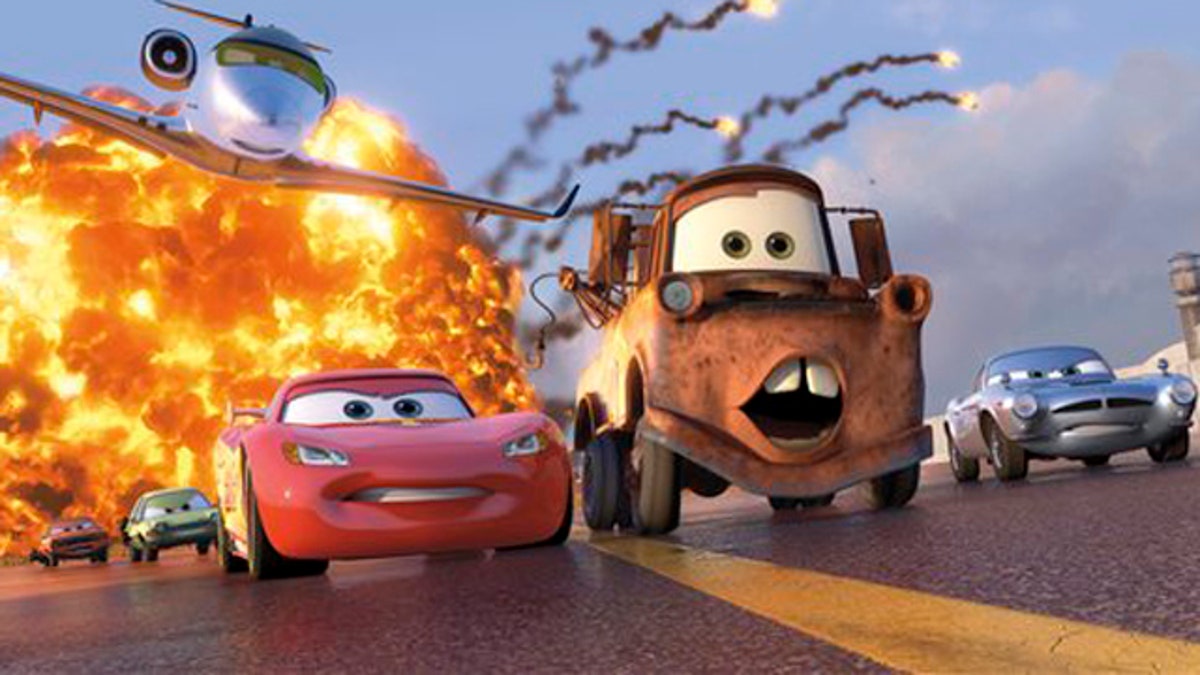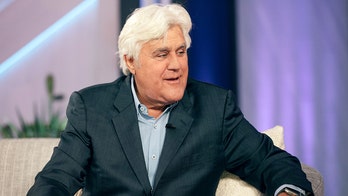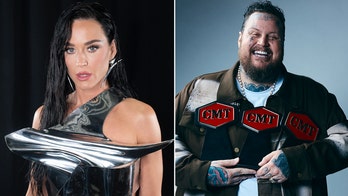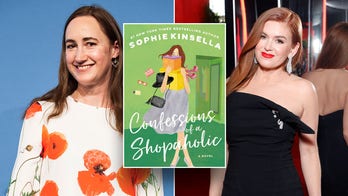
In this file film publicity image released by Disney-Pixar, animated characters Lightning McQueen, voiced by Owen Wilson, foreground left, Mater, voiced by Larry the Cable Guy, center, and Finn McMissile, voiced by Michael Caine, right, are shown in a scene from "Cars 2." "Cars 2" cruised to a No. 1 finish with a $68 million opening weekend, according to studio estimates Sunday, June 26, 2011. That makes 12 wins in a row for Pixar since 1995s Toy Story. (©Disney/Pixar. All Rights Reserved.)
Gone are the days when children’s films were just that – children’s films.
In Hollywood today, movies that are animated or kid-orientated are made and marketed as “family films,” meaning they have become increasingly laced with adult jokes and references to appeal to a more mature audience.
“We’ve always wanted to make the kind of movies that we like to watch. I love taking my sons to the movies, but more often than not, my wife and I would either go to a movie that wanted to see and it was sort of inappropriate for the kids and we would be bored,” director and chief creative officer at Pixar and Walt Disney Animation Studios, John Lasseter, told FOX411’s Pop Tarts column. “I always wanted to make a movie that played for adults and was great for kids as well.”
Neil Patrick Harris, who stars in the upcoming remake of the 80’s sensation “The Smurfs,” is also “proud” that the family flick targets a broad audience.
“There is a lot of great content you can take your kids to but also enjoy as an adult or a grandparent,” he said. “This covers a lot of demographics in an interesting way.”
While the highly-anticipated film brings to life the sincerity, or shall we say smurferity, of Papa, Clumsy, Grouchy and their army of little blue figurines, it takes them to the harsh world of New York City where Gutsy Smurf fans his private parts, Smurfette mimics the famous Marilyn Munroe scene of the wide dress being blown up, and the gnome-like creatures exclaim: “Let’s smurf this joint!”
And in modern children’s movies as a whole, there is no shortage of not-so G-rated jabs and gags specifically designed to go over kids’ heads.
In the first “Cars” installment the giggling female vehicles “flash their headlights” at Lightening McQueen, a fishing rod with Barbie legs is referred to as “a hooker” in “Toy Story,” and Johnny Depp’s “Rango” was rife with smoking, gun showdowns, nooses and naughty words (“hell,” “damn,” “tart” and “trollop”.) Meanwhile, Syndrome exclaims that Mr. Incredible and Elastigirl got "biz-zay!" when he notices their children in “The Incredibles,” and “Finding Nemo” cleverly falls short of some explicit language: “Don't you guys realize we are swimming in our own—!" "Shhh! Here he comes.”
But are filmmakers trying so hard to entertain adults that the youngsters are now the ones left in the cold?
“It takes a deft hand not to take the adult-oriented bits too far. If the balance is not handled properly the kids might be the ones glazing over,” said Hollywood entertainment and pop culture expert Scott Huver. “Too much adult-centric content might leave children feeling puzzled and left out, and possibly even prompt some questions their parents would rather not answer just yet. Yet too little material to engage adults may leave parents feeling a film is too tame, simplistic and ‘uncool’ for their kids. But as the pressure for big box office performance and cool cred increases for the often highly lucrative family fare, it’s likely some filmmakers may end up trying too hard to make both the kid and grownup audiences happy and wind up missing the mark for either of them.”
According to Craig Detweiler, film scholar and director of Pepperdine University’s Center for Entertainment, Media and Culture, these “family” films of the 21st century might be too modernized to become classics.
“The evergreen nature of the early Walt Disney films demonstrates the fact that you don’t have to overload on pop culture references that will not pass the test of time. At this point, I would say the more hip animated films like ‘Shrek’ may not endure because over their overemphasis upon contemporary humor and references,” Detweiler said.
Adult innuendos aside, some experts are also concerned that the morals and messages of these films are now too focused on fueling young, impressionable minds with political arguments.
Last month Pixar’s “Cars 2” pushed the message of alternative fuel and portrayed traditional gasoline as the villain, 2008’s “Wall-E” centered on the dangers of pollution, human destruction and obesity, 2009’s “Astro Boy” was criticized by some for championing Marxist ideologies, and the Oscar-winning “Happy Feet” hawked an obvious stance against global warming and overfishing.
So is it all becoming a bit much?
“Hollywood has been putting politics and heavy messages into so-called children's animated fare instead of just trying to tell timeless stories like ‘Snow White’ or ‘Pinocchio.’ Directors and studios know that many parents will take their kids to see the films, so it is almost as if they feel obligated to ‘add’ some kind of message so adults will walk away thinking about something,” said Rob Weiner, popular culture librarian Texas Tech University. “Much of the storytelling in ‘classic’ tales has been lost. It is important to remember that classic films had that human element which left the audience uplifted.”
But that seemingly ancient form of simple story-telling is not quite extinct – yet.
The masterminds behind Disney Animation’s upcoming “Winnie the Pooh,” which opens in theaters this weekend, acknowledged that the classic has indeed evolved to be “a family film this time around,” yet it retains the essence of its original A.A Milne tale without a political charge.
“The pace of life is pretty fast today. We’ve got a lot of things vying for our attention. The nice thing about the 100-acre wood is you can go, sit down with Piglet and have some tea and just enjoy being with friends,” director Stephen Anderson told us. “That’s never going to go out-of-style.”
And it’s without the bells and whistles of the ever-evolving 3D medium.
“The hand-drawn animation is, in my eyes, really refreshing to see. Maybe I’m a cranky guy, but the assaultive nature of the current crop of 3D movies wearies me,” added Tom Kenny, the voice of Rabbit. “People say, ‘it’s great, it’s like a roller coaster ride,’ but I don’t want to be on a roller coaster for two hours. They are supposed to be over in a minute.”






